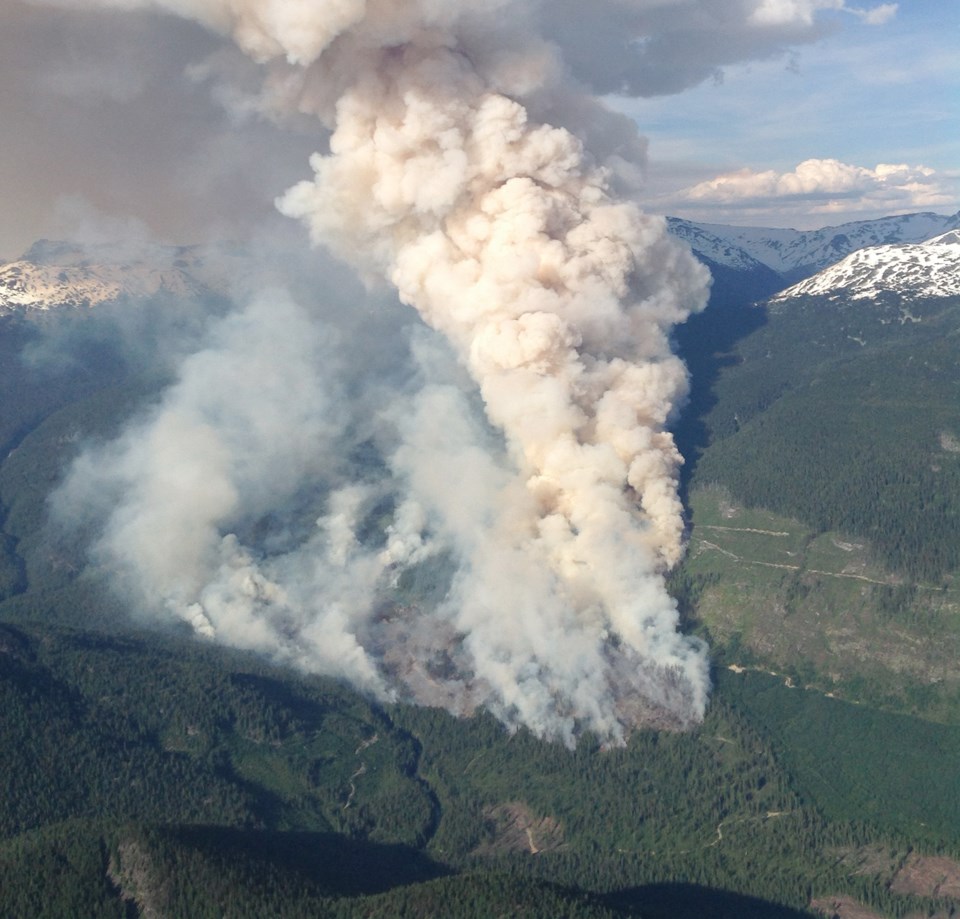After previous summers that were interrupted by wildfire notices and air quality monitoring, most Squamish residents are used to warnings to not leave campfires unattended or throw cigarette butts out their car windows, but there is a less common wildfire concern that many may not be as aware of – target shooting.
The Squamish RCMP have investigated five complaints of careless use of firearms so far this year, according to Cpl. Sascha Banks.
While none of these incidents sparked a fire, Banks said that may not be the case when conditions become drier.
In fact, a 2013 study by the US Forest Service involved experiments that showed after impacting a hard surface, such as a target, rifle bullets could spark organic matter.
“If the backcountry and surrounding areas of Squamish became bone-dry with little to no precipitation, the risk of wildfires would significantly increase with target shootings in those areas, as would any other incendiary device such as cigarettes and campfires,” Banks said.
In 2016, 54 per cent of the 1,050 wildfires in B.C. were caused by humans. Lightning, according to figures from the provincial government, caused the rest.
According to Squamish Fire Chief Bill Stoner, anything that can create a spark is a concern, but cigarette smoking and careless or abandoned campfires are of the greatest concern, “and are where Squamish Fire Rescue primarily focuses our due diligence and enforcement efforts.”
In terms of wildfire and target shooting, the risk increases when things are added to the targets to make them explode on impact, according to Donna MacPherson, fire information officer with the B.C. Wildfire Service.
“That is what we call a binary exploding target,” MacPherson said, adding the initial intention of the targets was for people who do distance target shooting. With an exploding target they can see when the target is hit without having to go up to it.
Commercial exploding targets in and of themselves do not cause fires, but it is what people add to the mix that can.
“People are taking those targets and they are attaching them to flammable things such as gasoline and propane tanks and then blowing them up. That creates an incredible risk, especially when the forest is hot and dry,” MacPherson said.
This is why, during the summer, binary exploding targets are included in category two bans by the wildfire service.
“We’ve had a couple of fires on the coast where people have done that kind of thing – they are attaching them to flammable substances and that really gets going.”
According to Environment Canada, conditions in June will set the stage for how dry this summer will be.
“The amount of rain we receive in June is critical for soil moisture and how the summer will play out,” meteorologist Matt MacDonald told The Chief.
While the last week of May saw temperatures 10 degrees above normal, the beginning of June is expected to see seasonally average temperatures of approximately 20.5 degrees.
“Beyond that… there’s good indications that June will be warmer than normal and for July and August there’s weak indications that those two months will be warmer than normal.”
The wildfire service is watching the weather and forest conditions closely and may soon put in initial burning bans, according to MacPherson.
“These hot and dry days, especially if there is a bit of wind, dry things out right away,” she said.
Stay up to date on bans and forest conditions at www.bcwildfire.ca.



